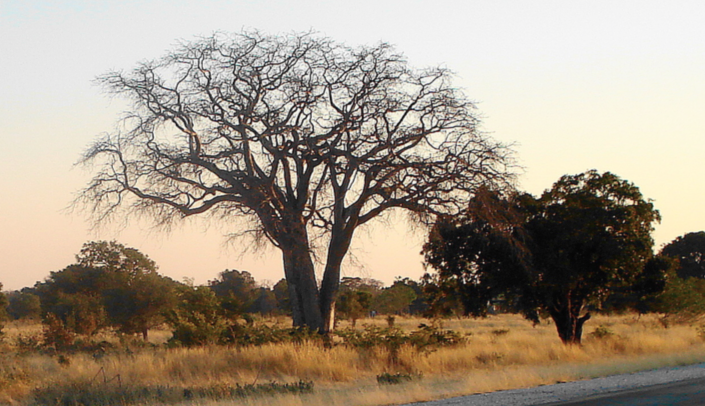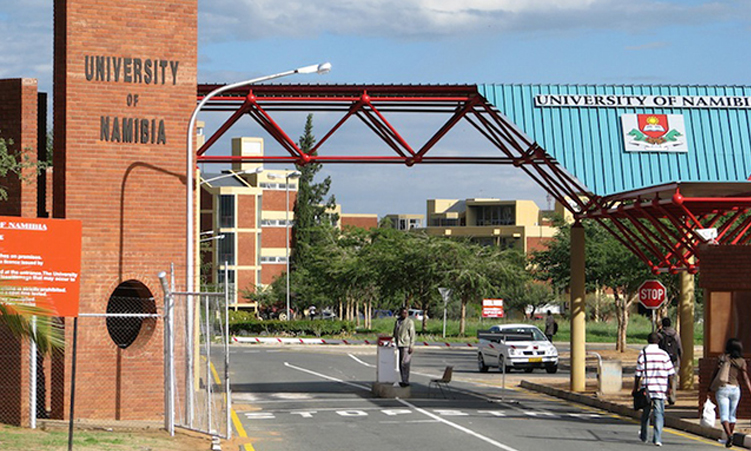• LUISE HOFFMANNIN THE dry season the Manketti tree is easy to identify by its size and the very symmetric shape of its large spreading crown.
The Manketti tree is of particular economic importance for the rural population of its distribution area.
Reportedly members of the Kung tribe consume 100 – 300 Manketti seeds per day and a diet based on these nuts is more reliable than any kind of dry land agriculture they could carry on in their semi-arid environment.
Indeed, an elderly Kung man, when asked why they did not grow crops, replied: “Why should we when there are so many manketti trees?”
Archaeological evidence shows that Manketti fruit were already consumed by inhabitants of these regions as long as 7 000 years ago.
The fruit and seeds or nuts are consumed raw or cooked or used to produce the nutritious but very potent „kashipembe“. Unless damaged by insects, they may keep for up to a year even while lying under the tree.
When boiled, the fruit pulp turns into a maroon porridge similar to apple sauce.
Protected by a thick, very hard shell, the nut-like seeds make up 70% of the fruit. They resemble pock- marked pecans and are very hard to crack. Elephant love to eat the fruit and drop the seeds in their dung from which they are easier to collect than from under the trees.
Reportedly the seeds do not germinate unless they have passed through the gut of an elephant.
The nutritional value of the seed is outstanding. Fifty-seven percent by weight consist of mainly unsaturated and monounsaturated fats while proteins make up 26% and the seeds also contain magnesium, iron, copper, zinc, thiamine, riboflavin, nicotinic acid, and large amounts of vitamin E.
They are eaten whole or pounded into a paste and mixed with meat, roots or porridge. The oil has traditionally been used as a body rub to clean and moisten the skin.
Trees close to human settlements are harvested first. If more fruit are needed, collecting expeditions are organised to more distant dune regions during which the availability of drinking water is the limiting factor.
Some people make do with the water found in hollows in the trunks of the Manketti trees.
Allegedly there are large reserves of Manketti trees which are not harvested due to the lack of water in their vicinity.
The trees bear best if good rains have fallen during the previous rainy season but when it rains on the flowers they set very few fruit.
Strong winds or hail may tear the fruit from the trees. Single-stemmed trees bear more fruit than multi-stemmed trees.
Propagation: This decorative shade tree can be propagated by truncheons but they only thrive in deep, well drained sandy soils.
Such truncheons were planted near the offices of the Ministry of Agriculture at Rundu in November 1998.
After truncheons have taken root they do not require watering as regularly as plants grown from seed. Also the ratio between male and female trees can be determined in advance.
Propagation by seed reportedly is not easy mainly because it is difficult to remove the seed intact from the very hard seed coat.
Stay informed with The Namibian – your source for credible journalism. Get in-depth reporting and opinions for
only N$85 a month. Invest in journalism, invest in democracy –
Subscribe Now!






